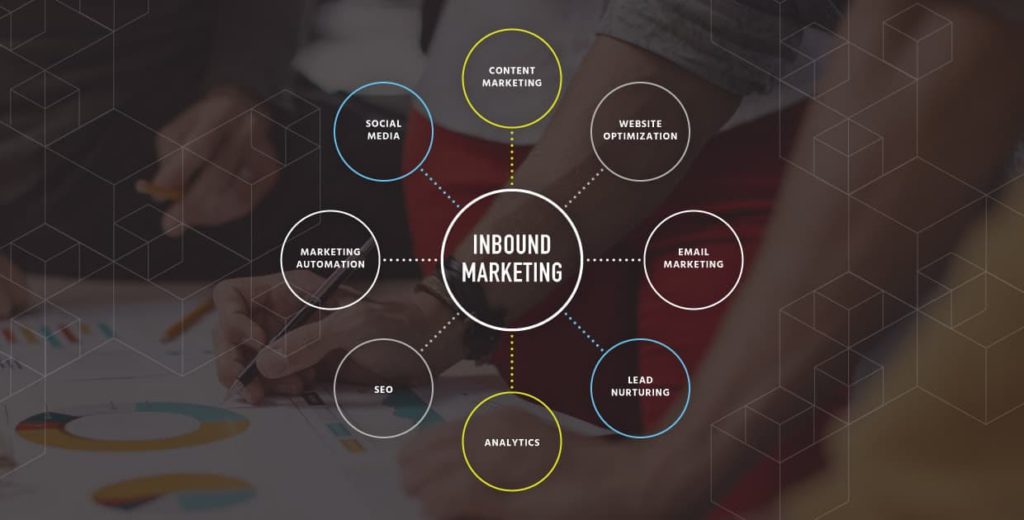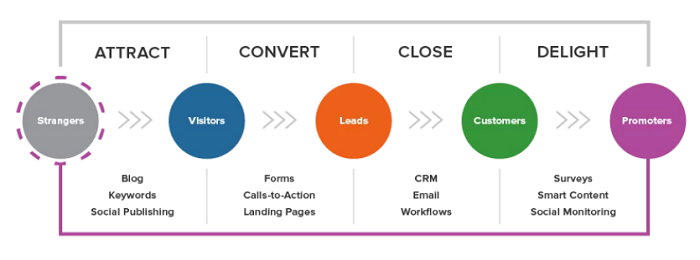15 Strategies for a Compelling Inbound Marketing Case Study

People enjoy a compelling story. Stories have the power to educate, entertain and build relationships. Inbound marketing is about telling your story well, promoting it, and attracting your ideal customers.
An inbound marketing case study exemplifies how subtle storytelling can inspire brand value. A case study turns boring data about your brand into a compelling narrative that helps validate your point.
Most case studies are detailed insights of real-life examples showcasing your commitment to clients through a narrative highlighting key areas of your success. This type of storytelling can make for a great inbound marketing case study.
This post will cover creating a case study – specifically, an inbound marketing case study.
Defining Inbound Marketing Case Study

You may be asking, what is an inbound marketing strategy?
Inbound marketing is attracting customers with relevant content tailored to their specific interests. This requires careful research about the market demands and a story tailored to fill the gap with a service or product you offer.
As part of your inbound marketing strategy, a case study can reveal many new opportunities for your business. It helps project your success to a clearly defined audience likely to respond to your marketing efforts by reading your story. This is an exceptional way to penetrate the market and land high-quality leads for your business.
The process of creating collaterals to attract and nurture leads is your inbound marketing strategy.

15 Steps for an Effective Inbound Marketing Case Study

The following best practices will guide you with your next inbound marketing case study with practical insights into creating a case study.
1. Showcase impressive results
The purpose of the case study is to show data that supports your product’s ability to solve a problem in the market – don’t be shy to shortlist the best statistics to prove your point.
2. Use a simple layout
Your case study layout should not be too cluttered and should be relatively easy on the eye. Leave enough white space between elements and ensure that you employ a standard template for your case studies.
3. Use concise statements
Case studies should be easy to read and thus consist of crisp and concise statements to keep the reader engaged.
4. Use a monochromatic color palette to maintain a professional look
A monochromatic and minimalist color palette is easier to pay attention to without distractions. Keep the consistency of colors throughout your case study.
5. Highlight long-term goals in your case study
An excellent way to project the value your brand offers is to showcase a statement of your long-term goal with the solutions you can provide to real challenges prospects may face.
6. Back your success statements with data
Ensure that you highlight your solution to a problem with factual data that can impress the reader.
7. Use an action-based, emotive, and persuasive tone
By using easily relatable language with action-based vocabulary, you can persuade the viewer to click on the CTA of your case study.
8. Keep in mind your prospects and potential clients
While showcasing the success achieved with a particular client, you have to tailor the case study to meet the eye of a potential client. The best way to do that is to address a challenge your prospects may face and then provide a solution.
9. Use visuals to highlight impactful data
While using more impactful statistics than others, feel free to use visual elements or infographics to make them pop out.
10. Employ high contrast colors and shapes to attract the viewers’ attention to important parts of the case study
Experiment with circles and rectangles in complementing colors to drive the reader’s attention to key sections in your case study. This method serves as a guiding compass.
11. Choose fonts that are easy on the eye and maintain consistency
Even if you want to mix up various fonts, maintain a certain level of consistency to ensure that the case study looks clean and professional.
12. Conduct further research to collect more data for your case study
If you would like to highlight a challenge, feel free to conduct surveys or research to support your case study’s available data and statements.
13. Use charts to showcase complex data if required
Using charts and graphs is recommended if you have complex data sets or timelines to show, making it easier for the reader to understand in one go.
14. Highlight the key takeaways from your inbound marketing case study
By highlighting the key takeaways of your case study, you immediately remind the reader of your solution’s value to a challenge they may face.
15. Provide a clear CTA that guarantees conversions
Your CTA is the ultimate objective of a case study, besides informing the public about your brand. In this case, you must ensure that you nurture their interest enough to take action, subscribe, get a free trial, or enquire about your services.
Never compromise on the CTA for your inbound marketing case study.
The Takeaway
An inbound marketing case study is compelling for any company to showcase its services and solutions to existing and new potential customers.
This happens without you having to pitch hard. Showcasing how you can solve issues for your existing customers builds trust. Follow the tips in this blog, and your case study will be excellent.
FAQs
The inbound methodology is all about building and nurturing relationships with your prospects, consumers, and customers.
Choose a topic, pick a client, address their challenges, showcase your implementation of the solution, and analyze the impacts of your solution to highlight your client’s success story. Back the statements with data, use visuals and a clear layout followed by a compelling CTA at the end.
An inbound marketing strategy defines your brand and its services using content like podcasts, videos, blogs, e-books, white papers, case studies, newsletters, mailers, SEO, social media, etc. This attracts high-quality prospects and nurtures them into leads.
Consult an expert, read more about “topic,” get your free trial, book a free demo, subscribe to receive updates, join our newsletter, etc., are some examples of inbound marketing case study CTAs.
Check out a couple of case studies posted by Pepper Content.
Latest Blogs
In this blog, explore the golden rules of using AI marketing tools so you can leverage the benefits to their maximum potential.
In this blog, you’ll learn how to avoid the pitfalls of SEO over-optimization while enhancing your site’s performance.
In this article, we’ll take a look at what AMP is, its advantages and disadvantages, and how it affects SEO.
Get your hands on the latest news!
Similar Posts

Content Marketing
8 mins read
The Ultimate Round-Up of Content Marketing Tips from 2023

Content Marketing
6 mins read
Content Marketing in the Age of Big Data: Leveraging Data for Competitive Advantage

Content Marketing
6 mins read